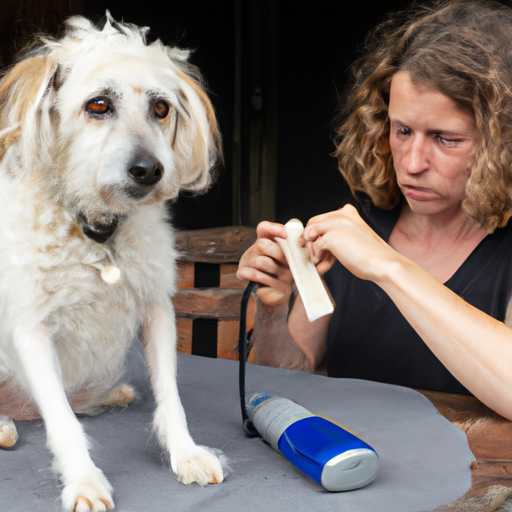Dogs are not just pets, they’re part of the family. But when your furry friend becomes a host to fleas, it can turn your home into a nightmare. As a caregiver, you’ll want to do everything possible to alleviate their suffering. Here’s a comprehensive guide to help you in your quest to rid your beloved dog of these pesky parasites.
H2: Spotting the Signs of Fleas
Fleas are not always visible to the naked eye, but they leave tell-tale signs on your pet. Keep a keen eye for the following symptoms:
- Excessive scratching, licking, or biting at the skin
- Hair loss
- Flea dirt (resembles coarse ground black pepper)
- Flea eggs (tiny white dots)
- Allergic dermatitis, a condition caused by flea saliva
H2: Choosing the Right Flea Treatment
Different dogs react differently to various treatments, and you need to find the one that suits your pet the best. Some common flea treatments include:
- Topical applications: Applied directly to the pet’s skin, usually at the back of the neck.
- Oral medications: These are given to your pet to ingest and work systemically.
- Flea collars: A collar that releases flea and tick repelling chemicals.
- Shampoos and sprays: These can kill fleas on contact.
| Type of Treatment | Time to Effectiveness |
|---|---|
| Topical | 24 hours |
| Oral Medications | 2 hours |
| Flea Collars | 24 hours |
| Shampoos/Sprays | Immediate |
H2: Cleaning your Home
Fleas can lay eggs in your carpet, furniture, and even between floorboards. To get rid of them:
- Vacuum thoroughly, especially under furniture and along baseboards.
- Wash all bedding, clothes, and soft furnishings your pet has come into contact with.
- Use a flea spray for household surfaces.
- Consider hiring a professional exterminator if the infestation is severe.
H2: Preventing Future Infestations
Prevention is better than cure – this statement couldn’t be more accurate when it comes to flea infestation. Here’s what you can do:
- Maintain regular flea treatment for your pets.
- Regularly vacuum your home and wash pet bedding.
- Keep your garden clean and free of debris.
- Limit your pet’s interaction with infested animals.
H2: FAQs
Q: How quickly can fleas reproduce?
A: A female flea can lay up to 50 eggs a day. It’s why infestations spread rapidly.
Q: Can fleas infest humans?
A: Yes, but they prefer non-human hosts.
Q: How often should I treat my pet for fleas?
A: Monthly treatments are typically recommended, but consult your vet for the best advice.
Q: Are certain dogs more susceptible to fleas?
A: No, all dogs are susceptible to fleas, regardless of breed or size.
Remember, when it comes to fleas, swift action is key. With patience, perseverance, and the right treatment, your dog will be flea-free in no time.



